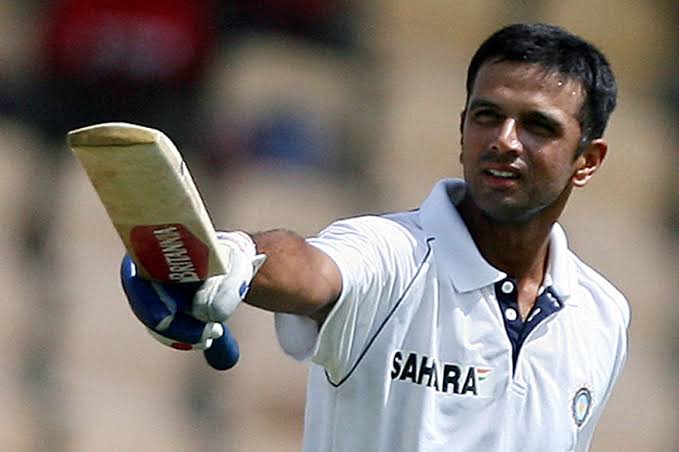Rahul Dravid, fondly known as “The Wall,” is more than just a cricketing legend. His journey from a young batsman in Bangalore to one of India’s most respected sports icons embodies discipline, resilience, and leadership. For fans and aspiring leaders alike, Dravid’s story offers lessons in perseverance, humility, and strategic thinking. As we reflect on his legacy in June 2025, let’s dive into the life of a man who redefined Indian cricket and continues to shape its future.
Early Life: A Foundation Built on Grit
Born on January 11, 1973, in Indore, Madhya Pradesh, Rahul Sharad Dravid grew up in Bangalore with a love for cricket. Raised in a middle-class family, his parents emphasised education alongside sports, a balance that shaped his disciplined approach. Dravid’s early days at St. Joseph’s Boys’ School saw him honing his skills, often spending hours perfecting his technique. His debut for Karnataka in 1991 showcased a maturity beyond his years, hinting at the greatness to come.
Fun Fact: Dravid’s nickname “Jammy” came from his father’s association with a jam company, a quirky contrast to his later moniker, “The Wall.”
The Rise of “The Wall”
Dravid made his international debut in 1996 against England, stepping into a star-studded Indian batting lineup. His technical prowess and unflappable demeanour quickly earned him the tag “The Wall.” With 13,288 Test runs at an average of 52.31, including 36 centuries, Dravid’s ability to anchor innings was unmatched. Iconic knocks like his 180 against Australia in Kolkata (2001) alongside VVS Laxman turned matches into legends.
What set Dravid apart was his adaptability. He donned the wicketkeeper’s gloves to balance the team, took on captaincy, and batted anywhere from opener to No. 6. His 270 against Pakistan in Rawalpindi (2004) and 148 in Leeds (2002) under tough conditions showcased his grit. For fans, watching Dravid was like witnessing a masterclass in patience and precision.
Leadership Lesson: Dravid’s willingness to prioritise team needs over personal glory teaches us that true leaders adapt and sacrifice for the greater good.
Captaincy: Steering India Through Transition
Dravid took over as India’s captain in 2005, a challenging period with a young squad and intense expectations. His calm leadership led India to historic Test series wins in the West Indies (2006) and England (2007), the latter after 21 years. While his captaincy stint (2005–2007) had ups and downs, including India’s early 2007 World Cup exit, Dravid’s focus on nurturing talent like MS Dhoni and Suresh Raina laid the groundwork for future successes.
His decision to step down as captain in 2007, citing personal reasons, reflected his self-awareness—a rare trait in high-pressure roles. Dravid’s leadership wasn’t about flamboyance but about building a cohesive unit, a quality that shone brighter in his later roles.
Leadership Lesson: Dravid’s quiet strength reminds us that leadership is about empowering others, even when the spotlight isn’t on you.
Post-Retirement: Shaping Indian Cricket’s Future
After retiring from international cricket in 2012, Dravid didn’t fade away. He took on coaching roles, transforming India’s Under-19 and ‘A’ teams into talent factories. As head of the National Cricket Academy (NCA), he mentored stars like Shubman Gill and Yashasvi Jaiswal. His stint as India’s head coach (2021–2024) was a masterstroke, guiding the team to the 2023 World Cup final and the 2024 T20 World Cup title.
Dravid’s coaching philosophy—rooted in discipline, preparation, and player empowerment—earned him respect. He focused on mental resilience, ensuring players like Rishabh Pant thrived post-injury. His ability to connect with Gen-Z cricketers while maintaining old-school values made him a bridge between eras.
Leadership Lesson: Dravid’s mentorship shows that great leaders evolve, adapting their expertise to inspire the next generation.
Personal Life and Values
Off the field, Dravid is a family man, married to Vijeta Pendharkar, a surgeon, with two sons, Samit and Anvay. His low-key lifestyle, far from the glamour of modern cricket, reflects his humility. Dravid’s love for reading and his eloquent speeches, like the 2011 Bradman Oration, reveal a thinker who values perspective over fame.
His philanthropy, including support for children’s education and cancer awareness, adds depth to his legacy. Dravid’s ability to stay grounded despite global adulation makes him a role model beyond cricket.
Fun Fact: Dravid is an avid reader, often spotted with biographies and history books during tours.
Why Rahul Dravid Inspires in 2025
In June 2025, Dravid’s influence remains strong. His recent role as a strategic advisor for IPL teams like the Rajasthan Royals shows his commitment to cricket’s growth. For fans visiting India, catching a glimpse of Dravid at the NCA in Bangalore or an IPL match is a treat. His story resonates with anyone striving for excellence—whether in sports, work, or life—proving that consistency and integrity trump flashiness.
Travel Tip: If you’re in Bangalore, visit the Chinnaswamy Stadium, where Dravid played many domestic matches. The Karnataka Cricket Association’s museum offers a peek into his early career.
Conclusion
Rahul Dravid’s journey from “The Wall” to a visionary coach is a testament to his enduring impact. His career teaches us that leadership isn’t about loud victories but quiet, consistent efforts that inspire others. As India celebrates its cricketing heroes in 2025, Dravid stands tall, not just for his runs or trophies but for the values he embodies. Want to learn from “Jammy”? Embrace discipline, stay humble, and always put the team first.













Recent Comments
No comments yet.